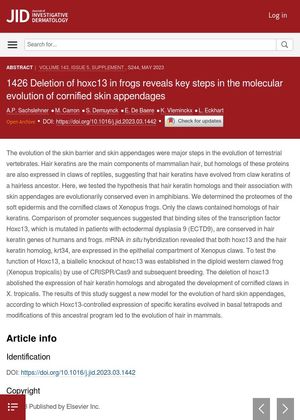Deletion of Hoxc13 in Frogs Reveals Key Steps in the Molecular Evolution of Cornified Skin Appendages

TLDR Deleting the Hoxc13 gene in frogs shows its crucial role in developing skin structures similar to hair.
The study investigates the evolutionary conservation of hair keratin homologs in amphibians, specifically in Xenopus frogs. Researchers found that only the claws of these frogs contained homologs of hair keratins, and the transcription factor Hoxc13, which is linked to ectodermal dysplasia 9 (ECTD9) in humans, plays a crucial role in their expression. By creating a biallelic knockout of hoxc13 in Xenopus tropicalis using CRISPR/Cas9, they observed that the deletion of hoxc13 halted the expression of hair keratin homologs and prevented the development of cornified claws. This suggests that the Hoxc13-controlled expression of specific keratins, which originated in basal tetrapods, was a key step in the evolution of hard skin appendages and eventually led to the development of hair in mammals.